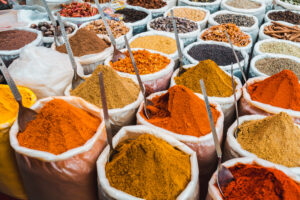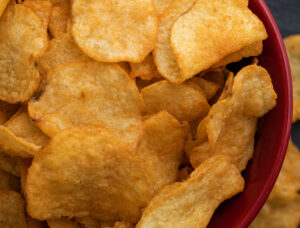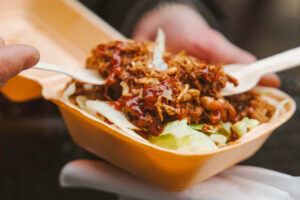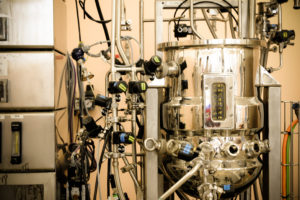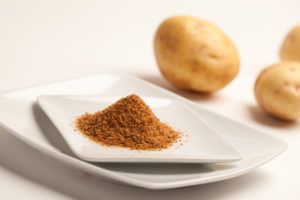In simple terms, caramel color is made by cooking carbohydrates. It is similar to how you would make caramel on a stovetop – you heat sugar until the color changes from white to dark brown. But in order to create large quantities that are stable and suitable for coloring foods and beverages a few more steps are required. Watch the video below or read on for an in-depth look at how the most commonly used color in the world is made.
Need a quick overview? Check out the infographic!
1. Select your sugar
The first step in creating caramel color is to determine a carbohydrate source. There are many types of sugars that can be used to create caramel colors – sucrose, fructose, glucose, invert syrup – all derived from sources such as corn, wheat, sugar beets, and sugar cane. Some types of sugar are chosen because they work best for different classes of caramel, while other types may be chosen to meet certain certification requirements – such as non-GM or organic.
2. Determine your class of caramel
Next, the type of caramel is determined – there are four classes of caramel color, each with their own properties and requirements. Each class requires different reactants, or caramelization aides, such as food-grade acids, alkalis, and salts. Reactants help start the browning process, but also affect the stability, color intensity, and hue of the caramel color.
3. Cook the Sugar
Once the type of sugar and class of caramel is determined, the sugar is loaded into large cookers and a highly specific cooking process begins. For lower viscosity caramels, a system with high heat as well as pressure are used. These caramels are great for usability in manufacturing. For higher viscosity caramels, like class III caramels going into soy sauce, a non-pressurized system is used. While the sugars are heated, the reactants are added into the cookers at strategic times throughout the cook.
For the actual cooking process, caramel colors are created using either one or both of the following types of browning methods: 1) caramelization, or the browning of sugars, and 2) the Maillard reaction, the browning of sugars in the presence of amino acids or other ingredients with amine groups. While this may sound complex, the Maillard reaction is a normal browning process that occurs in the foods we enjoy every day – roasted coffee, seared steaks, and baked bread, for example.
Class I, or plain, caramel colors are created using solely caramelization to produce color. Class II, III, and IV caramel colors, on the other hand, use caramelization as well as Maillard browning reactions to achieve darker colors with increased stability. As the sugars brown, the reactants are cooked off and are not found in the final caramel color product.
After the sugar has finished cooking, the caramelized product is cooled and filtered to ensure product quality and uniformity. From here it can either be dried for use in powder form or moved onto packaging and shipping to customers.
Interested in learning more about caramel colors? Check out these resources:

